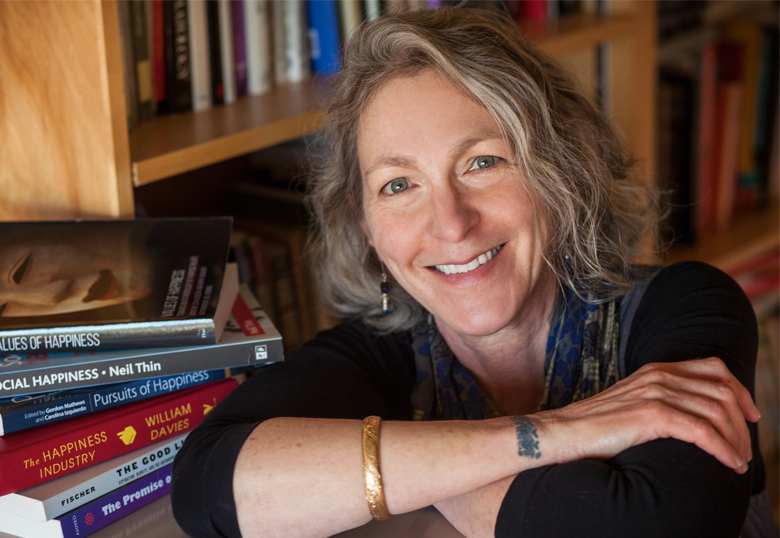As scholarly research and policy initiatives have more recently focused on happiness, Dr. Catherine Kingfisher, an anthropologist at the University of Lethbridge, couldn’t help but think about well-being at a community level.
“A lot of the literature in happiness studies, which is a fairly new area of scholarship, is focused overwhelmingly on the individual,” says Kingfisher. “From an anthropological perspective, too much emphasis on the individual is a problem because EuroAmerican forms of individualism are not culturally universal. So, I started asking myself what other approaches are out there that might allow us to broaden our perspective.”

After exploring several possibilities, Kingfisher settled on intentional communities, specifically urban collective housing communities, which are gaining in popularity yet remain understudied. Like other intentional communities, urban collective housing communities locate happiness and well-being, at least in part, in particular forms of social organization. But they are unique in two ways.
“The first is that they’re urban,” says Kingfisher. “Unlike other forms of intentional community, like ecovillages and spiritual communes, they are integrated with the wider society rather than segregated from it. At the same time, they are critical of mainstream society and try to create something that can respond to the kinds of loneliness, fragmentation and isolation they see as characteristic of society today.”
The second feature of these communities is that they are neither exclusively collectivist nor exclusively individualist. Residents have their own apartments, complete with a kitchen and bathroom, but the housing community also has common kitchen, eating and meeting areas, shared gardens, laundry rooms and play areas for children.
“What is unique about these places, and what has real policy implications, is that they’re hybrids,” says Kingfisher. “There’s a balance — a constant negotiation, really — between what is considered personal and private and what is considered public and collective. In these communities, happiness and well-being are constructed as simultaneously social and subjective, not one or the other.”
Kingfisher, who was awarded more than $111,000 over four years from the Social Sciences and Humanities Research Council, has chosen two communities: Kankanmori in Tokyo and Quayside Village in Vancouver. The study will focus on how the relationship between interdependence and independence is negotiated, and on how the idea of balance is mobilized in everyday practice. It will also compare how the model of urban collective housing plays out in a society that has historically emphasized individualism, like Canada, and one that has historically emphasized collectivity, like Japan. This comparative analysis will provide insight into how ideas morph as they travel across cultural space and how they are translated and assembled in specific contexts of practice.
“They have the exact same model — they want to create a community where people can have their own space but also have community — but this plays out in very different ways, given the cultural context,” she says.
On her preliminary visits to the collective housing communities, Kingfisher found distinct differences in the way things are done. In Japan, a strict line divides personal from common space while the line is fluid in Vancouver. The two communities handle conflict in different ways, too. In Quayside Village, people are encouraged to express their feelings when conflicts arise while Japanese culture values controlling one’s emotions.
The project is designed to be collaborative in nature. One unique methodological feature involves bringing two members of each community to visit the other.
“This will allow community members to learn about other approaches and reflect on their own ideas and approaches,” says Kingfisher.
An additional aspect of Kingfisher’s study will have residents documenting life in their community through video recordings. Kingfisher will supply the equipment and Don Gill, a U of L Fine Arts professor and project collaborator, will act as an artistic consultant and visit both sites to facilitate the production of film shorts. Each community will also choose two residents to participate in a 10-day exchange to the other community in the study. They’ll be looking at how each community handles conflict and how they negotiate the boundary between the personal and the social. The eventual outcome will be a non-academic book in Japanese and English, along with film shorts.
“It’s fascinating and one of the reasons I want to bring people from each site to the other is so they get a sense of how things are done,” she says. “It gets them to reflect on how they are operating themselves and they get new ideas or they get their own ways of doing reinforced or validated.”
